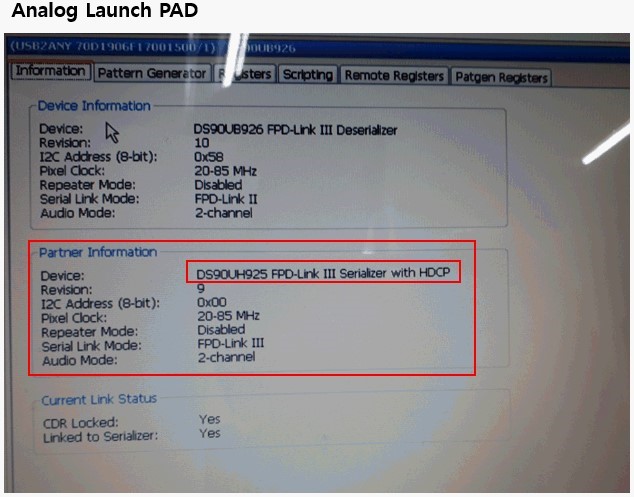Other Parts Discussed in Thread: ALP, DS90UB926Q-Q1
Hi TI team.
The DS90UB926EVM and DS90UR905 are connected as shown below.
The ALP recognizes the DS90UR905 as a DS90UH925.
1. Is something wrong with this? or Is it working normally?
2. When testing the DS90UB926EVM alone, running the ALP pattern generator produces no data output. If it works normally, should the data be output?
Please check my Question.
Thanks,
Downey.




